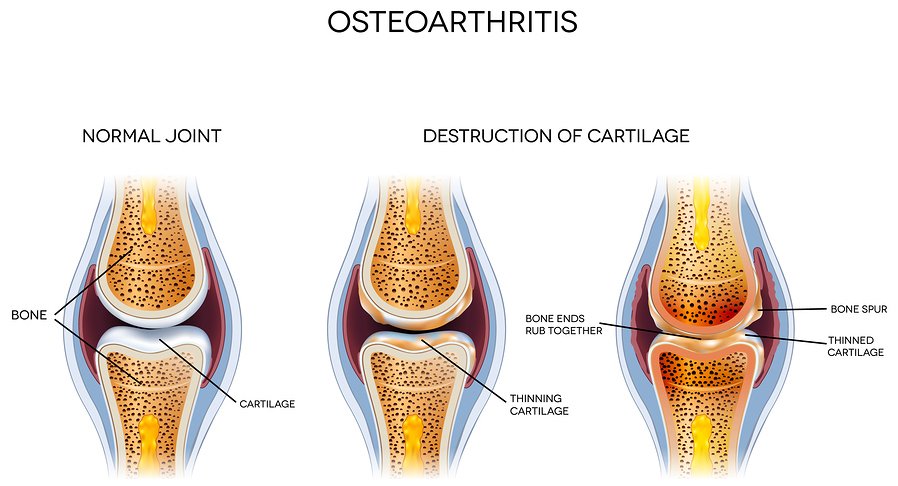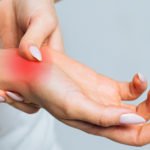Article Summary
- Research shows that corticosteroid injections may speed the deterioration in joints with arthritis
- Corticosteroids have been linked to thinning bones in previous studies
- Weight loss, daily exercise, physical therapy, and natural anti-inflammatories and joint protectors are all safer options for relieving arthritis pain
Research on Corticosteroid Injections Worsening Arthritis
The joint pain experienced by arthritis sufferers can become severe and limit the ability to perform daily tasks. Doctors will often recommend injections with corticosteroids in order to reduce inflammation at the site and thereby provide some pain relief. But if you have arthritis and have been receiving steroid shots, you might want to read on. According to new research, this type of treatment, in some situations, might actually do more harm to your joints over time.
The study, which took place at the Boston University School of Medicine in Massachusetts, found that corticosteroid injections, under certain circumstances, may be associated with damage to the joints being treated, potentially contributing to a worsening of arthritis.1Kompel, Andrew J.; et al. “Intra-articular Corticosteroid Injections in the Hip and Knee: Perhaps Not as Safe as We Thought?” Radiology. 15 October 2019. Accessed 19 October 2019. http://pubs.rsna.org/doi/10.1148/radiol.2019190341. These results are based on an investigation that included 459 men and women who were given between one and three corticosteroid shots to treat pain from hip or knee arthritis.
Roughly eight percent of the subjects experienced complications related to the injections. The majority of the complications were due to a rapid deterioration in the condition of the affected joint. Their problems included an accelerated progression of arthritis, bone loss, stress fractures in the hip, and osteonecrosis, which causes bone tissue to die. The issues that cropped up were identified an average of seven months after the patients received their cortisone shots.
Why Would Cortisone Shots Be Doing More Damage Than Good?
It must be noted that this research was not conducted as a clinical trial with strict protocols in place, but more of a compilation of evidence from cases tracked at one specific clinic. Therefore, we cannot know for sure that it was the corticosteroid injections that caused the joint damage. That being said, this is not the first investigation to link corticosteroids to serious problems. A 2017 study at Tufts Medical Center in Boston, Massachusetts showed that repeated steroid injections were linked to a quicker breakdown of the cartilage in the knee.2McAlindon, Timothy E.; et al. “Effect of Intra-articular Triamcinolone vs Saline on Knee Cartilage Volume and Pain in Patients With Knee Osteoarthritis.” JAMA. 16 May 2017. Accessed 20 October 2019. http://jamanetwork.com/journals/jama/fullarticle/2626573.
Corticosteroids can cause the bones to thin, particularly if they are given in higher doses. That may be why many of the problems that cropped up among the subjects of the current study had to do with fractures, bone loss, and death of bone tissue. And given the fact that corticosteroid injections are not effective in many patients and, when they are, the relief they provide might only be short-term (relief can range from one to two weeks to a year or more per shot), it is clearly not an ideal method of treatment for many patients.
Better Alternatives for Treating Arthritis Pain Than Corticosteroids
So, what is a person to do if they have significant arthritis pain and their corticosteroid injections are so high-dose and so frequent as to be too risky to continue? There are other, safer ways to alleviate arthritis pain that should be considered as an alternative. Obviously, we are not talking about taking NSAIDs regularly or undergoing joint-replacement surgery as some physicians would suggest since these options are equally fraught with risks of side effects and complications.
Instead, focus on natural ways to reduce the pain of arthritis. Since carrying excess weight puts a tremendous strain on the joints, if you are overweight, your first order of business should be to shed some pounds. Exercise is a proven method of pain relief for arthritis sufferers too, helping to strengthen muscles and increase flexibility. It’s important to start off lightly if you’re not in the habit of working out; begin with a five- or 10-minute walk or a few laps in a pool. And physical therapy can be very helpful for treating arthritis. Regular sessions of physical therapy can be beneficial by improving posture, employing strategies for reducing stress on affected joints, applying hot and cold therapies to lessen stiffness, and more.
You also should consider natural joint support formulas that contain ingredients such as avocado soy unsaponifiables, cetylmyristoleate, and boswellia as they reduce joint inflammation, support the rebuilding of joint cartilage, and help reduce pain and lubricate damaged joints. You also might want to consider topical pain relief that has the ability to reach deep into the body and help reduce pain and inflammation inside the joint itself.
References
| ↑1 | Kompel, Andrew J.; et al. “Intra-articular Corticosteroid Injections in the Hip and Knee: Perhaps Not as Safe as We Thought?” Radiology. 15 October 2019. Accessed 19 October 2019. http://pubs.rsna.org/doi/10.1148/radiol.2019190341. |
|---|---|
| ↑2 | McAlindon, Timothy E.; et al. “Effect of Intra-articular Triamcinolone vs Saline on Knee Cartilage Volume and Pain in Patients With Knee Osteoarthritis.” JAMA. 16 May 2017. Accessed 20 October 2019. http://jamanetwork.com/journals/jama/fullarticle/2626573. |











Very difficult to walk, ride a bike etc when your knees hurt thus making any form of exercise difficult. And when it is bone on bone nothing helps.